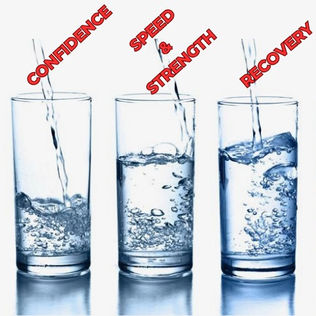Sudden Cardiac Arrest: Lessons from the Euros
- Jennifer Dunaway

- Jun 14, 2021
- 3 min read

The terrifiying events of Saturday's Euro match between Denmark and Finland in which Danish midfielder and soccer superstar Christian Eriksen suffered cardiac arrest has brought to the forefront the reality of Sudden Cardiac Arrest in sports. Reports from those on the scene were horrifying. Although the reports were not necessary; we could see the devestation on every person's face who was there. In reality, we were all there maybe not in person but as soccer parents and fans we all could place ourselves there. We could see our children in the players, our friends in the fans, our spouses and loved ones in the face of Sabrina Jensen (Eriksen's long time girlfriend) and ourselves in Christian Eriksen. As a 29 year old healthy world class athlete with 2 small children at home, Eriksen could have been any of us.
Within moments of his collapse players, trainers and medical staff jumped into action. They knew what to do. They had the training to position him correctly, begin CPR and they had an Automated External Defibulator (AED) at his side in less than 3 minutes. Reports from the field consistently shared that he was "gone" the quick action of the medical staff and the AED saved his life.
Unfortunately not every person who suffers sudden cardiac arrest is as fortunate. The State of Ohio has been ahead of the curve bringing awareness to this issue since establishing Lindsay's Law in 2017 (that video you were supposed to watch with your athlete before signing the form each year). However, is this enough? If an AED is used within 3 minutes of collapsing from Sudden Cardiac Arrest the chances of survival are 90%, if you wait 5 minutes your survival drops to 74% and beyond that the chances are not good. It's great that we are aware that Sudden Cardiac Arrest is a posibility on our soccer fields but without CPR training and an AED readily available what good is awareness?
With this in mind we are challenging every team and every field to have a portable AED on site for every training and every game. Furthermore, we are challenging every club to equip their coaches not only with Safe Sport and Concussion training but also First Aid and CPR. On its face AEDs are a hefty expense and AED, First Aid and CPR training take time - but the cost to not take this step is too great. Ohio can do better. Ohio can set the standard.
What can I do?
Donate to your club and/or league. If every family donated $70 to their club for each of their players they could cover AEDs and training for each coach in Ohio.
Contact your team admin and DOC. Let your club know that Sudden Cardiac Arrest is an important risk and that you want coaches and admins to be better equipped to handle.
Volunteer for your team and club. Offer to coordinate AED, CPR and First Aid training for your club (coaches and parents). Coordinate the collection of funds and procuring AEDs for your club or league.
Contact us. If you are in the position to donate funds for AEDs or if you work in the pharmaceutical equipment industry and can provide resources for clubs we would be happy to work with you to support soccer in Ohio.
Share your successes. Once your club or team implements CPR or AED training we would love to share your success and learn from your best practices.
.png)















Comments